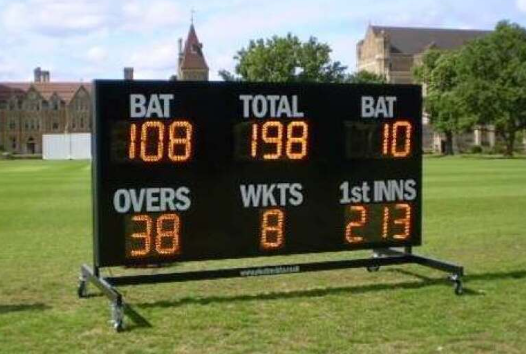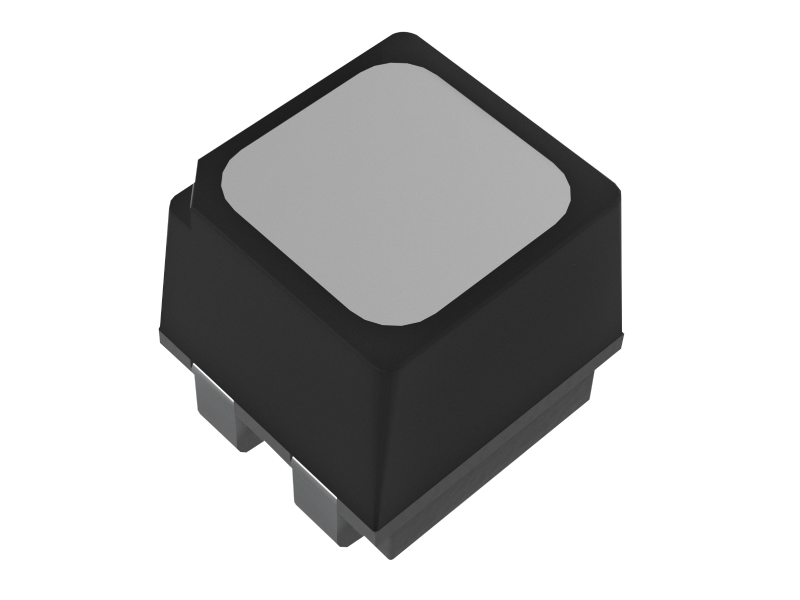LED scoreboard is popular simply because it enhances the overall result of the sporting events with unmatched visual experience for your loyal fans. Placing an LED scoreboard at the most conspicuous position in the stadium, becomes a must for modern sporting event to display the changing of scores at the first time. No doubt that nothing can be more excited than when the team or the sports star which or who you support takes the lead in a competition. And the real-time broadcast of the result by an LED scoreboard can make this moment more memorable for all the loyal fans.

The history of scoreboards can be traced back into the late 1800s. The first scoreboard was unveiled for a football match between the University of Pennsylvania and the Crimson in the Ivy League in 1893.
The evolution of scoreboards has experienced different stages from old manual operated scoreboard to nowadays LED display powered scoreboard. Here is the details.
Manual Scoreboards:
In the early days of sports, manual scoreboards were commonly used. These scoreboards consisted of physical panels or boards on which numbers, letters, or symbols were manually changed by operators to update the scores and other relevant information. These scoreboards required manual labor and were limited in terms of the information they could display.

Mechanical Scoreboards:
Mechanical scoreboards emerged as an improvement over manual scoreboards. They utilized mechanical mechanisms such as rotating panels, flip cards, or rotating drums to update the scores and other information. Mechanical scoreboards allowed for faster updates and provided options for displaying additional details like game time, team names, and player statistics.
Electro-Mechanical Scoreboards:
With the advent of electricity and advancements in mechanical engineering, electro-mechanical scoreboards became popular. These scoreboards incorporated electrical components to automate the updating process. They used motors, gears, and switches to control the movement of numbers and other display elements. Electro-mechanical scoreboards provided more flexibility and allowed for smoother transitions between score updates.
Digital Scoreboards:
The introduction of digital technology revolutionized scoreboards.
Digital scoreboards replaced physical panels and mechanical components with electronic displays. They utilized light-emitting diodes (LEDs) or liquid crystal displays (LCDs) to show the scores, game time, team names, player statistics, and other information. Digital scoreboards offered enhanced visibility, dynamic content, and the ability to display graphics, animations, and video replays.

Video Scoreboards:
Video scoreboards, also known as jumbotron screens or video walls, took scoreboard technology to the next level. These large-scale displays featured high-resolution LED panels or projection screens capable of showing live video feeds, instant replays, advertisements, and interactive content. Video scoreboards transformed the spectator experience by providing immersive visuals and engaging entertainment during breaks in the game.
Integrated Multimedia Displays:
Modern scoreboards have evolved into sophisticated multimedia displays that integrate various forms of content. They combine video feeds, live game statistics, social media updates, advertisements, and interactive elements into a single unified system. These displays can be customized and controlled using advanced software, offering real-time updates and interactive features for spectators.
Mobile and Personalized Scoreboards:
With the rise of smartphones and mobile applications, spectators now have access to personalized scoreboards. They can use dedicated apps or websites to view live scores, game statistics, and customized alerts based on their preferences. This allows fans to stay updated on multiple games simultaneously and access detailed information tailored to their interests.
You can utilize LED scoreboards to achieve different purposes in a sporting event.
For an LED scoreboard, displaying the real time scores of the competition must be the first priority. And during this, we can integrate more than just a report of current scores since LED scoreboard allows different types of contents. For example, we can include a reply of the moment or some highlights of the competition.
Fans are a big part of an sporting event. Utilizing the LED scoreboard to display some engaging contents, such as the memorable scenes of the fans can help to increase the atmosphere of the event.
Advertising for your sponsors can be included without interfering the experience of your fans if the content is creatively designed for max visual appeal. In contrary, these ads will add more elements into the event.
LED scoreboards are versatile and can be used in various sports and entertainment settings. Here are some common places where LED scoreboards are used.
Sports Stadiums:
LED scoreboards are a staple in sports stadiums for displaying scores, game time, player statistics, and other relevant information during live games. They are typically positioned in prominent locations such as above the center field, along the sidelines, or at the ends of the arena.
Indoor Arenas:
LED scoreboards are commonly found in indoor arenas used for sports like basketball, hockey, volleyball, and indoor soccer. They provide real-time updates, display player stats, and enhance the spectator experience with dynamic visuals and animations.
Outdoor Arenas:
Outdoor arenas, such as those used for football, baseball, soccer, and track and field events, often incorporate LED scoreboards. These scoreboards are designed to withstand outdoor elements and can display large, high-resolution visuals that are visible even in bright sunlight.
Gymnasiums and Sports Halls:
LED scoreboards are used in smaller sports venues like gymnasiums and sports halls. They provide essential game information to players and spectators, including scores, time remaining, and player fouls or penalties.
Racing Tracks:
LED scoreboards are employed in motorsports venues, including car racing circuits, cycling tracks, and horse racing tracks. They display lap times, race positions, and other critical information to keep spectators informed throughout the event.
Aquatic Centers:
LED scoreboards are used in swimming pools and aquatic centers to display race times, competitor names, and current rankings during swimming competitions. They are often placed at the end or side of the pool for easy visibility.
Multi-Purpose Facilities:
LED scoreboards find utility in multi-purpose facilities that host various sports events, concerts, exhibitions, and other entertainment activities. These versatile scoreboards can adapt to different event requirements and display relevant information to keep the audience engaged.
Arenas and Concert Halls:
LED scoreboards are utilized in large entertainment venues to display live video feeds, close-up shots of performers, audience interactions, and other visual content during concerts, shows, and performances.
Sports Bars and Viewing Areas:
LED scoreboards are installed in sports bars, restaurants, and dedicated viewing areas to provide patrons with live scores, game updates, and a more immersive sports-watching experience.
Educational Institutions:
LED scoreboards can be found in school gymnasiums, sports fields, and recreational facilities, allowing students, staff, and spectators to track scores and game progress during sporting events.

Kinglight provides various LEDs for scoreboard manufacturing
LED scoreboards are adaptable to various settings and can be customized to meet specific requirements, making them a popular choice for enhancing the spectator experience and providing crucial information during sports and entertainment events.